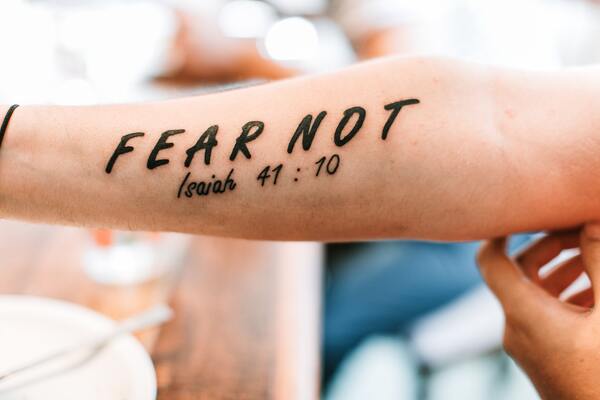Over the course of a lifetime, changes to your body and variations in your weight are both normal and to be expected. Although it’s great to lose weight for your health, you might worry about how your tattoo will change once you’ve changed. In actuality, when you lose weight, they frequently shrink and fade. This is because tattoos are essentially a series of punctures in your skin that inject ink into the dermis. Please continue reading if you’re curious about what happens to tattoos after weight loss.
Will Losing Weight Ruin A Tattoo
There are many different reasons why people get tattoos, but occasionally they do not consider what will happen to that tattoo over time. It won’t always appear as it did on the day you first got it. The same would apply if you lost a lot of weight quickly.
Do not let this deter you from getting tattooed because there is no assurance that losing weight won’t damage your ink. The most important things to think about when losing weight are how much you lose, how quickly you lose it, and where you want your tattoos to be placed on your body.
Consider some of these pieces of advice if you intend to lose a lot of weight in the future:
- Placement. Areas that are much less impacted by weight loss include the forearms, upper torso, outside thighs, lower legs, and feet. No matter how quickly you lose weight, these areas are generally safe for tattoo placement. Mid-riff areas and upper arms can also be safe from heavy distortion if the weight loss is slow and accompanied by increasing muscle tone
- Size. When analyzing how weight loss will impact a tattoo, the size of the tattoo may be a consideration. More room for error exists with larger tattoos. When stretching or shifting occurs, it is much more noticeable on a larger tattoo. Less surface area is covered by a small tattoo, which makes it more resistant to alterations.
- Shape. Another important factor is the tattoo’s shape. Asymmetrical and irregular tattoos won’t change nearly as much. The change following weight loss might be more noticeable if you have tattoos that are symmetrical or use shapes like squares or circles.
Thus, if you lose a lot of weight quickly or if your tattoo is on a particular part of your body like your stomach, inner arm, or inner thighs, it may affect your tattoo.
How Can Weight Loss Affect Tattoos
The ink used for tattoos seeps into the dermal layers of skin. The quality and appearance of the tattoo will depend on the state of the skin at the time of application. Rapid changes in weight are just one of many factors that can cause tattoo distortion.
The appearance of tattoos will change after significant weight loss or gain, and they may appear saggy, off-center, stretched or faded.
Keep in mind that your skin is the largest organ in your body. In contrast to a tattoo, it can be stretched and shrunk as necessary. Lines might not line up the same way they did before. The tattoo may move slightly depending on the area. Regarding how much it will be impacted, the tattoo’s location is also important.
How Do Tattoos Look When You Lose Weight
Small weight changes won’t significantly affect tattoos. It might not even be apparent. However, when you lose an extensive amount of weight quickly, changes will be noticeable
You might see warping, stretching, or other distortions in a tattoo if the wearer has lost a lot of weight. While both tattoos will be affected, smaller tattoos will experience different physical changes than larger ones.
The elasticity of your skin might not change as you lose a significant amount of weight quickly. This extra skin will skew the tattoo. But what other physical alterations to tattoos take place when you lose weight?
- Wrinkling. After you lose weight, tattoos, especially larger ones, may look wrinkled. This is due to the extra skin that has grown where fat once was stored. This is why it’s essential to lose weight gradually and tone your muscles if you want to keep your tattoo looking good.
- Definition. Losing weight can make tattoos of all sizes less clear. Some of those details may become blurry, faded, or simply less distinct over time if you have a very detailed tattoo.
- Positioning. Furthermore, the tattoo’s placement may change. When you lose weight, for instance, a tattoo that was perfectly centered on your thigh might no longer be. The tattoo is altered by the shifting and changing of the skin. It might seem to lean more toward one side than before.
- Size. The tattoo’s actual size won’t change, but how big people think it is might. Many people who want their tattoo to be a particular size may become frustrated by the fact that losing weight can have an impact on how large it appears.
Significant weight loss can change your tattoos, especially those that are in more fleshy areas of the body.
How To Reduce Tattoo Distortion After Weight Loss

Do you want to lose a lot of weight? The best course of action may be to postpone getting tattoos if you don’t already have any ink.
There are some things you can do to lessen the effects if you already have tattoos and want to lose weight:
- Place your tattoos in areas with little size variation. (It’s not a good idea because of how much the thighs, upper arms, and stomach fluctuate.)
- Select tattoos with more clean lines or geometric designs. (These exhibit the least distortion.)
- Consider getting inked by a skilled line artist with experience.
- Before getting tattooed, make sure your weight is healthy—not too thin or too fat. (Later distortions will be lessened as a result.)
- The skin’s quality will increase with continued hydration, reducing tattoo changes.
- To avoid stretch marks, keep your skin well-hydrated with a good tattoo moisturizer.
- Although they are less likely to shrink or distort, smaller tattoos can also lose their detail; this is nothing a touch-up couldn’t fix.
What Can You Do To Your Tattoo After Weight Loss
It largely depends on the degree of the changes your tattoo has undergone as a result of your weight loss. You might not need to do much to make the tattoo look good again, for instance, if you have only lost a small amount of weight.
- Touch-ups. Rapid weight loss occasionally causes tattoos to fade. With a few touch-ups, this can be fixed. To make the tattoo look more vibrant once more, ask your tattoo artist to add some color and definition.
- Add to the tattoo. You might also decide that more than just adding color, the tattoo needs to be fixed. If the tattoo has been altered, you might want to add to it to improve its appearance or cover up some of the changes.
- Removal. Even though it’s not a choice to be made lightly, some people decide that the change weight loss has made to their tattoo justifies its removal. This is a difficult and drawn-out process, so don’t rush it.
You might need to make these choices after you’ve lost a lot of weight. You can always decide not to do anything, and in all honesty, there is nothing wrong with coming to love the new story your tattoos are telling as a result of weight loss.
Conclusions
The overall quality of your tattoo after you lose weight is determined by a variety of factors. Therefore, if you’re considering losing weight, your tattoos won’t probably be affected by it.
Before getting inked, though, you might want to discuss your weight with your tattoo artist to make sure they’re comfortable working with you and that you are aware of any potential health risks.
